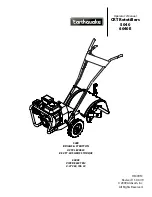
US
MSA Harness
22
(11)
Sternal – the sternal attachment may be used as an alternative fall arrest attachment in applications
where the dorsal attachment is determined to be inappropriate by a competent person, and where there
is no chance to fall in a direction other than feet first. Accepted practical uses for a sternal attachment
include, but are not limited to, ladder climbing with a guided type fall arrester, ladder climbing with an
overhead self-retracting lifeline for fall arrest, work positioning and rope access. The sternal attachment
may also be used for travel restraint or rescue.
When supported by the sternal attachment during a fall, the design of the Full Body Harness shall direct
load through the shoulder straps supporting the user, and around the thighs. Supporting the user, post
fall, by the sternal attachment will result in roughly a sitting or cradled body position with weight concen-
trated on the thighs, buttocks and lower back.
Supporting the user during work positioning by this sternal attachment will result in an approximate
upright body position.
If the sternal attachment is used for fall arrest, the competent person evaluating the application should
take measures to ensure that a fall can only occur feet first. This may include limiting the allowable free
fall distance. It may be possible for a sternal attachment incorporated into an adjustable style chest strap
to cause the chest strap to slide up and possibly choke the user during a fall, extraction, suspension,
etc. The competent person should consider Full Body Harness models with a fixed sternal attachment
for these applications.
(12)
Frontal – the frontal attachment serves as a ladder climbing connection for guided type fall arresters
where there is no chance to fall in a direction other than feet first, or may be used for work positioning.
Supporting the user, post fall or during work positioning, by the frontal attachment will result in a sitting
body position, with the upper torso upright, with weight concentrated on the thighs and buttocks. When
supported by the frontal attachment the design of the Full Body Harness shall direct load directly around
the thighs and under the buttocks by means of the sub-pelvic strap.
If the frontal attachment is used for fall arrest, the competent person evaluating the application should
take measures to ensure that a fall can only occur feet first. This may include limiting the allowable free
fall distance.
(13)
Shoulder – the shoulder attachment elements shall be used as a pair, and are an acceptable attachment
for rescue and entry/retrieval. The shoulder attachment elements shall not be used for fall arrest. It is
recommended that the shoulder attachment elements be used in conjunction with a yoke which incor-
porates a spreader element to keep the Full Body Harness shoulder straps separate.
(14)
Waist, Rear – the waist, rear attachment shall be used solely for travel restraint. The waist, rear attach-
ment element shall not be used for fall arrest. Under no circumstances is it acceptable to use the waist,
rear attachment for purposes other than travel restraint. The waist, rear attachment shall only be
subjected to minimal loading through the waist of the user, and shall never be used to support the full
weight of the user.
(15)
Hip – the hip attachment elements shall be used as a pair, and shall be used solely for work positioning.
The hip attachment elements shall not be used for fall arrest. Hip attachments are often used for work
positioning by arborists, utility workers climbing poles and construction workers tying rebar and climbing
on form walls. Users are cautioned against using the hip attachment elements (or any other rigid point
on the Full Body Harness) to store the unused end of a fall arrest lanyard, as this may cause a tripping
hazard, or, in the case multiple leg lanyards, could cause adverse loading to the Full Body Harness and
the wearer through the unused portion of the lanyard.
(16)
Suspension Seat – the suspension seat attachment elements shall be used as a pair, and shall be used
solely for work positioning. The suspension seat attachment elements shall not be used for fall arrest.
Suspension seat attachments are often used for prolonged work activities where the user is suspended,
allowing the user to sit on the suspension seat formed between the two attachment elements. An
example of this use would be window washers on large buildings.
Содержание Crossover Harnesses
Страница 19: ...MSA Harness 19 US ...
Страница 20: ...US MSA Harness 20 ...
Страница 24: ...US MSA Harness 24 ...
Страница 44: ...CA Harnais MSA 20 ...
Страница 45: ...Harnais MSA 21 CA ...
Страница 68: ...MX Arnés MSA 20 ...
Страница 69: ...Arnés MSA 21 MX ...
Страница 73: ...Arnés MSA 25 MX ...
Страница 74: ...MX Arnés MSA 26 ...
Страница 75: ...Arnés MSA 27 MX ...
Страница 76: ...For local MSA contacts please visit us at MSAsafety com ...
















































